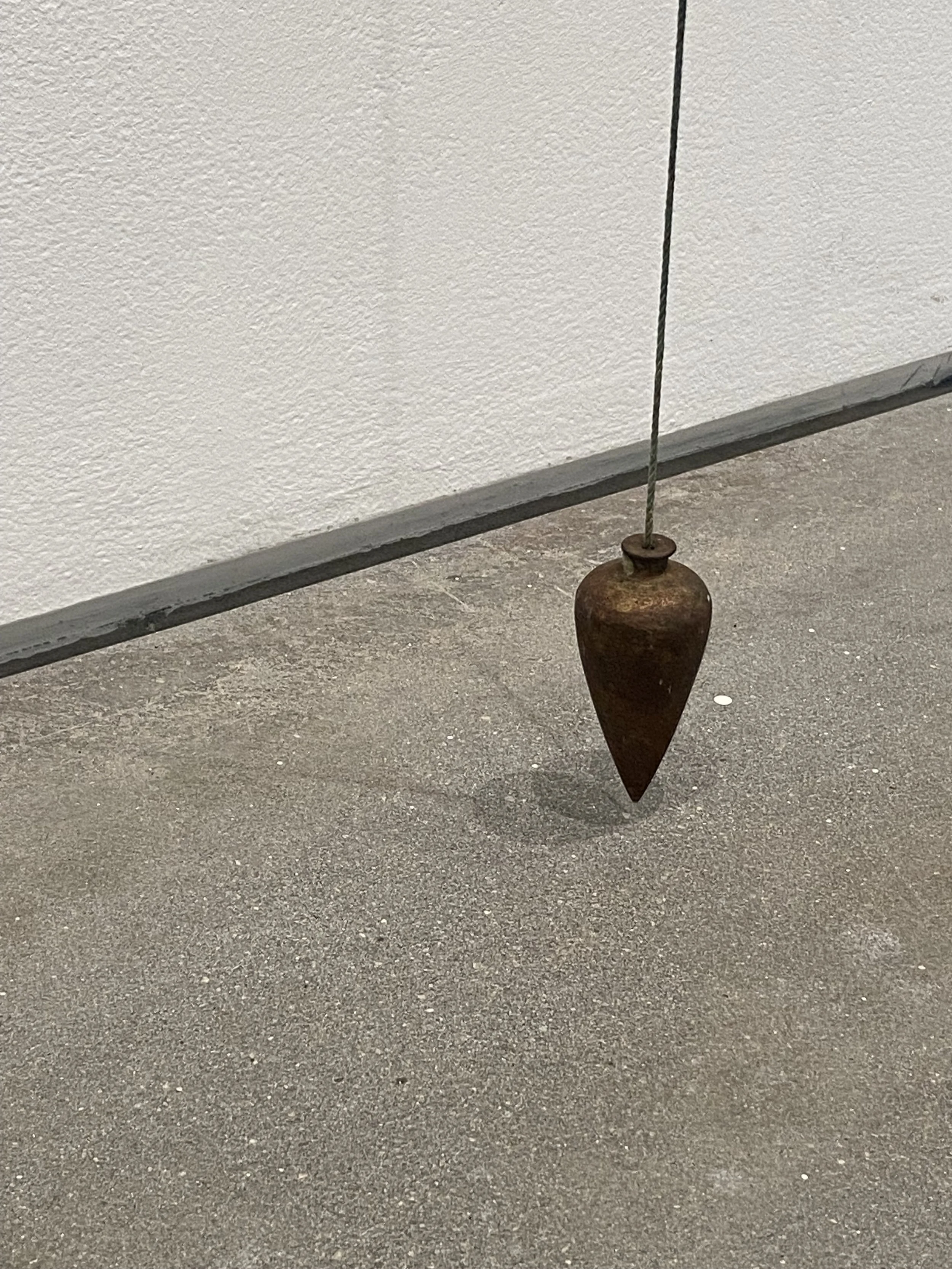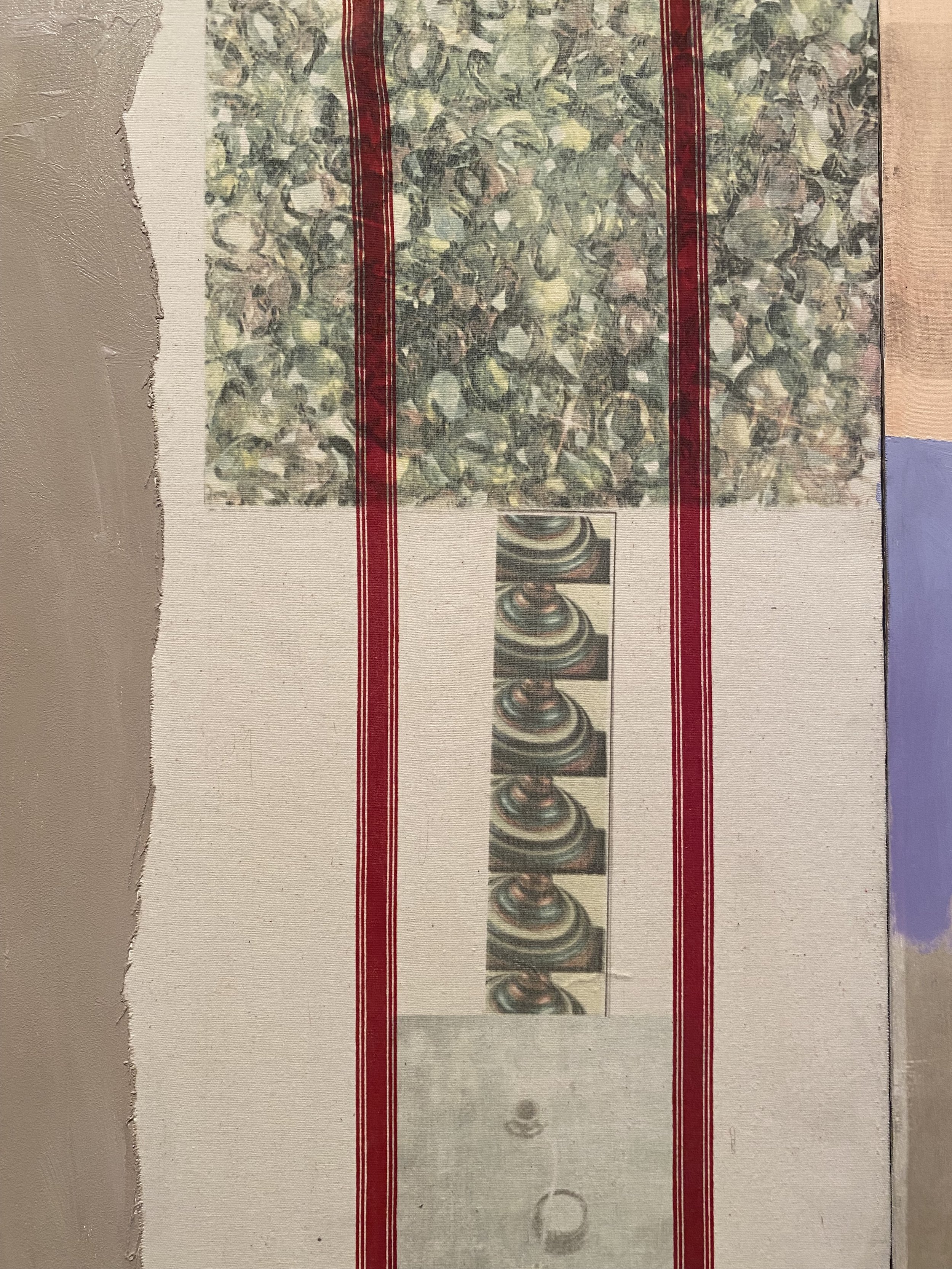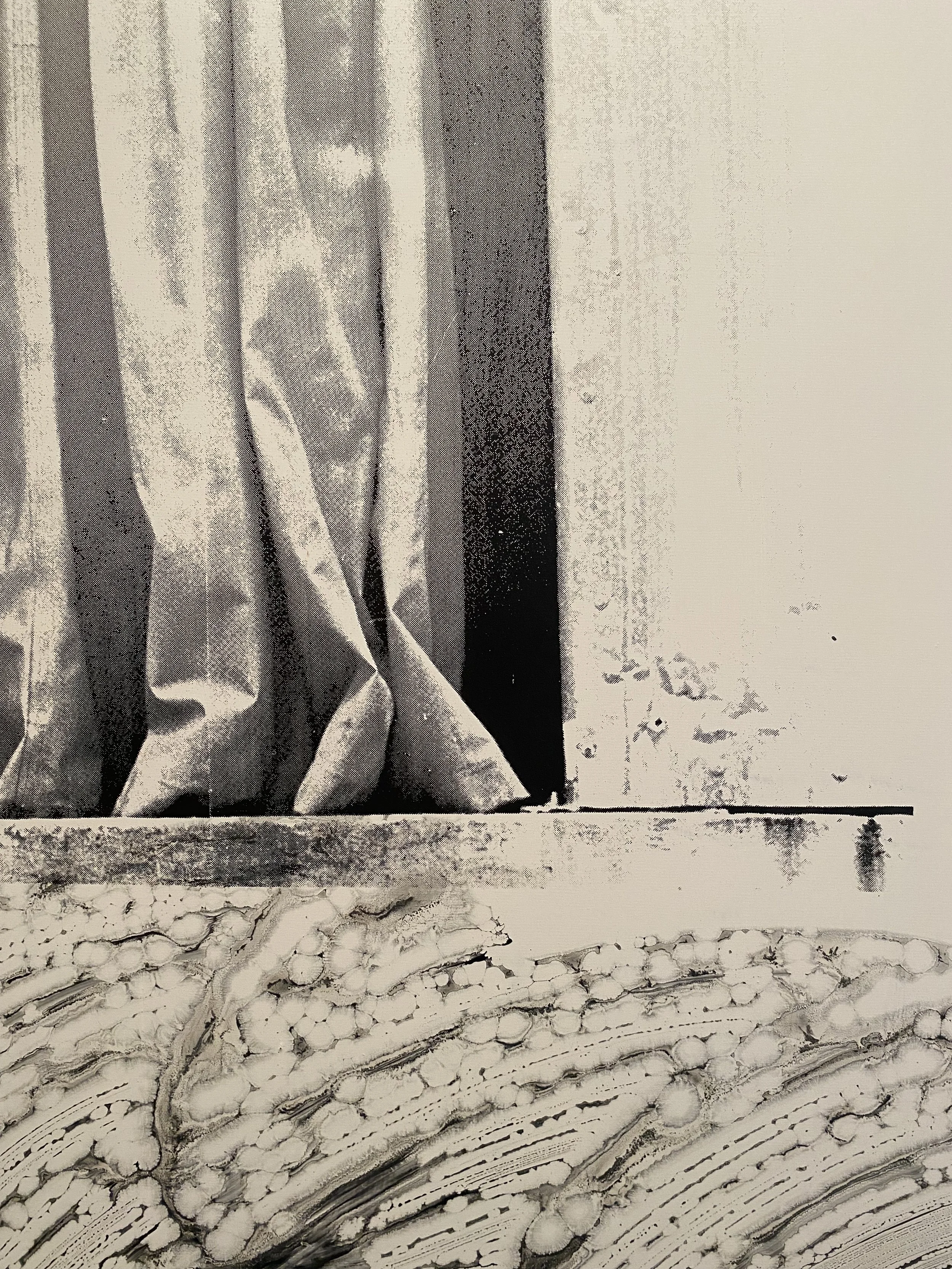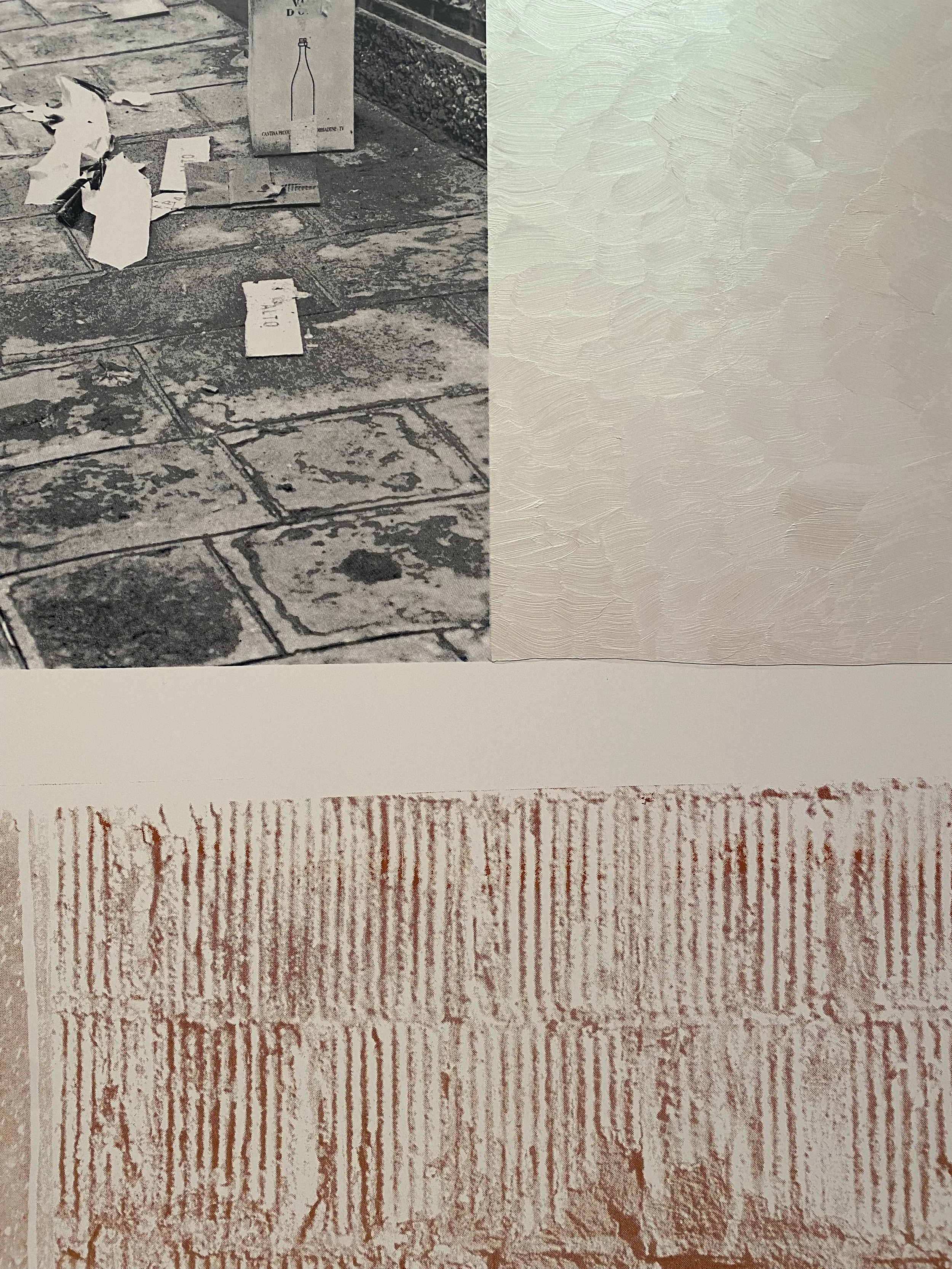Both bustling from wall to floor to ceiling, Exceptional Works (1971-1999) at Mnuchin Gallery and Venetians & early Egyptians (1972-1974) at Gladstone Gallery froth with Rauschenberg’s endless curiosity, urge for experiment and drive for discovery. As Hilton Als stated in the Gladstone Gallery catalogue, “restless yet disciplined”*. The former curls the bicep of Rauschenberg's vast oeuvre, pulling 19 works from 14 different series. Exceptional is an understatement as it seethes with inquisitive & unconventional processes, cheering a liberating buoyancy.
Whilst Venetians & early Egyptians (1972-1974) contrastingly deciphers a single series of work, it shows us how Rauschenberg's series’, whilst many, are not shallow. Here, Rauschenberg turns to the forces in objects to similarly reach that ecstatic boiling point which is most present in his 2D works.
In comparing Easter Lake (Galvanic Suite) against Untitled (Early Egyptian) 1974, the purchase Rauschenberg makes on balance in building frenzy becomes clear. Easter Lake finds its euphoria in striking an exact point of control between line and colour, and image & space. Rauschenberg is masterful in not over-egging the pudding, and demonstrates his trust in his mark-making and composition - he appears to make little attempt to undo or erase anything from the surface. This precision of dangerous composition occupies a beautifully chaotic stance… don’t move, because you might knock something over. Similarly, balance is crucial in Untitled (Early Egyptian) 1974. A skeletal piece of driftwood attempts to prize & hoist seemingly weighty blocks of stone. Here, balance builds tension, teasing with an approaching moment; a what-if moment, edging on the notion of what could happen next. This large task for the driftwood however is somewhat juxtaposed by the floaty, flaccid, weightless fabric tied to the end of the rope.
Two tenses are now apparent, with Easter Lake’s establishment of controlled chaos, it sits in the present, whilst Untitled (Early Egyptian) 1974, with its pry on anticipation, puts itself in the future.
Equally, this tension is present across many of the sculptures in the Venetians & early Egyptians (1972-1974) series’. A plumb bob hangs mere millimetres from the floor in Untitled (Venetian) 1973/1982, again flirting with the future tense as we form an anticipation.
The composition across many of the silkscreen and photo-transfer works battle between rigidity and fluidity. In Favor-Rites (Urban Bourbon), brushes & splashes of oil and acrylic paint offer a relief from the stark, bold and contrasting imagery. Subsequently, this translates into a cycle of breathing in the work; the silkscreens inhale & hold their breath, whilst the brush marks & splashes exhale, alleviating the assemblage of agitation.
It is important to note the beautiful dissection and closer examination available in all of these larger works; segmenting them into smaller sections creates equally stunning forms, perhaps what makes the work so enduring and exciting to examine.
Above all, however, Rauschenberg’s unwavering dedication in trusting creative intuition, artistic impulse & unmotivated spontaneity gives his work such an infectious creativity. He works with as few filters as possible and constantly celebrates uniqueness. His long career of innovation and daring experiments equipped him with an unmatchable arsenal of unique techniques. He was never stationary, and always looked for the next corner to turn. Perhaps moss can grow on a stone that rolls.
* Als, H., 2022. The Real Thing. Gladstone Gallery, p.1.







